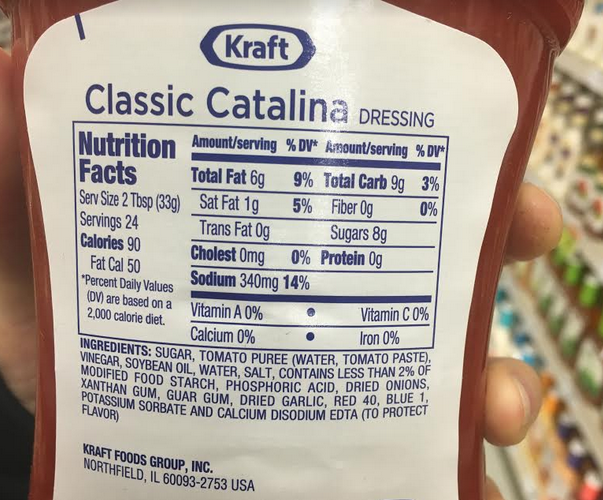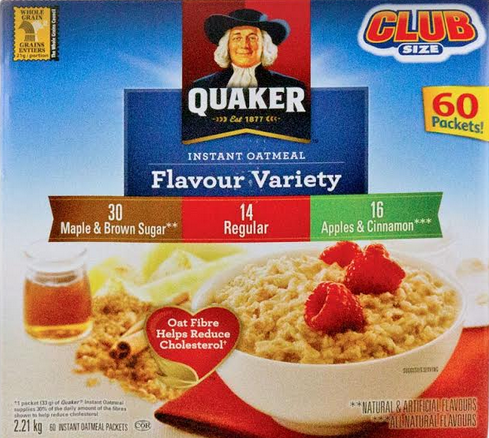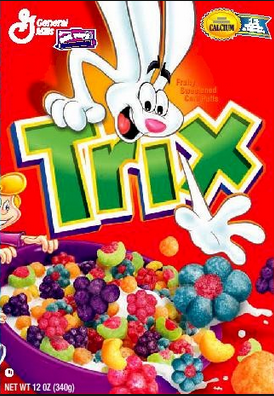Worst foods, part II: Don’t eat this stuff!
I apologize in advance for my rant redux today, but I’m just fed up…again!
Here are my second bunch of worst of the worst manufactured foods that have no place in a healthy diet.
have no place in a healthy diet.
For the previous four worst foods ever, click here, and weep.
#4: Salad Dressings.
Not all bottled salad dressings are bad, but most are. Typically a very simple recipe of oil and vinegar, a little salt, maybe some herbs — or a more “beefy” dressing may include bacon bits, cheese, mustard, or even cream.
 But most bottled dressings are a poor substitute, in more ways than one. A good example is Kraft Classic Catalina: like so many bottled, tomato-based products (ketchup comes to mind) this dressing’s first ingredient is sugar, the second tomato puree (water, tomato paste), vinegar, soybean oil, water, salt, plus a multitude of unpronounceable ingredients.
But most bottled dressings are a poor substitute, in more ways than one. A good example is Kraft Classic Catalina: like so many bottled, tomato-based products (ketchup comes to mind) this dressing’s first ingredient is sugar, the second tomato puree (water, tomato paste), vinegar, soybean oil, water, salt, plus a multitude of unpronounceable ingredients.
Skip it. I’m not singling out Kraft here — how about Ken’s Thousand Island? Soybean oil, chili sauce (tomatoes, corn syrup, vinegar, salt, spices) plus high fructose corn syrup…xanthan gum, and more.
Just two tablespoons contain 140 calories and 300 mg of sodium, 13% of your Daily Value for the day.
Click here for some easy and delicious (not to mention healthy!) salad dressing recipes from CookingLight.com.
#3: Flavored instant oatmeal.
Trying to eat a healthy breakfast? What could be better than oatmeal? Everything, if the oatmeal comes in a little package. Once the manufacturer takes that healthy grain, pre-cooks it with sugar, salt, artificial flavorings and colors, all bets are off. Shoot. They get to put a “heart healthy” claim on the front but ignore it, flip the box over, and read the ingredients instead.

Re-packaged oats? It’s not as pure as you think.
What to eat instead? Oats! Many of my clients have never enjoyed the full, nutty flavor of whole oats, and unfortunately, think that oatmeal is just pasty white goop.
Nope. Whole oats are full of fiber, protein, and promotes slow glycemic rise – great for a stable blood sugar, but instant oats, flavored and sugared, are more likely to spike blood glucose.
Whole, rolled, or cracked oats are easy to cook on the stovetop or the microwave, or maybe you have one of those instant pots or even a slow cooker! Make a big pot in advance, then just heat your portion for breakfast and serve.Top with raisins, pumpkin seeds, walnuts, and Greek yogurt and this meal will take you through clear to lunch.You can bake oatmeal too. I have a recipe for every cooking method, so just email me and I’ll send you the bunch.
#2: Flavored Yogurt:
Besides cow’s milk, yogurt made from goat’s milk, or sheep’s milk, even buffalo milk offer a variety of tastes and richness. Yogurt is fermented milk, a natural source of probiotics, and contains beneficial bacteria known to support the immune system and promotes good digestion.
 Natural yogurt is a great source of protein and supplies a variety of vitamins and minerals, notably calcium, potassium, and vitamin B12. Many store-bought brands have vitamin D added, important since vitamin D isn’t present in many foods. A cup of natural unflavored yogurt offers a lot of good nutrition in one small package.
Natural yogurt is a great source of protein and supplies a variety of vitamins and minerals, notably calcium, potassium, and vitamin B12. Many store-bought brands have vitamin D added, important since vitamin D isn’t present in many foods. A cup of natural unflavored yogurt offers a lot of good nutrition in one small package.
A six-ounce serving of plain whole-milk yogurt has about 8 grams of carbohydrate and no added sugar. Nonfat or skim milk yogurt has about 10 grams of protein and 13 grams of carbs. Whole milk Greek yogurt (strained) has significant protein (18 grams) and a bit less carbohydrate (7 grams).
But if you read the nutrition facts label, you’ll notice that the line that tells you how many grams of “sugars” in the serving is the same number as the line that says, “total carbs.”
Why the same number for carbohydrate and “added sugar”?
There is no sugar added to plain, natural yogurt. Lactose (milk sugar) is the naturally occurring carbohydrate in milk — it’s what makes milk naturally sweet.
However, leave it to manufacturers to make a healthy ingredient into junk food. I’m speaking of flavored yogurts. And just wait ‘till you get a load of kids’ yogurts.
Some yogurts have as much sugar — even more sugar added than regular ice cream.
Natural yogurt should have two ingredients — milk and Lactobacillus, a healthy bacteria.
Although health experts around the world recommend that all people should lower their intake of added sugars (high sugar diets correlate with obesity, which directly contributes to a myriad of diseases including type 2 diabetes, heart disease, high blood pressure, arthritis, and even some cancers), some yogurts are extremely loaded with sugar!
For example, a small 6-oz. container of strawberry-flavored Yoplait yogurt contains 26 grams of added sugar or 6 ½ teaspoons of sugar. It also contains modified cornstarch, gelatin, natural flavors, pectin, and it’s colored with carmine, a red food dye made from bugs. Does this gross you out? Read more from Live Science here.
Toni (and Dannon, Chobani, and just about all yogurt manufacturers) makes yogurts targeted at kids. The labels feature superheroes and cartoon characters — many come with cute little packets of candy, sweetened cereal, even cookies fastened to the top of the container.
I did a little label sleuthing yesterday, and picked up a Toni Mix container with a cute cow dancin’ on the front of the label — right next to the word “Galletas” … cookies! Flip that baby over to read the nutrition facts — 1 serving, 260 calories, total carbs 39 grams, and 28 grams of sugar! Shoot! That is seven teaspoons of added white sugar. Would you take a small 6-oz. cup of yogurt and add 7 teaspoons of sugar to it? Or sit your kid at the table with a cup of plain yogurt and let him add 7 teaspoons of sugar to it?
Ah, some parents are not aware of the huge amounts of sugar added to yogurts. A cup of ice cream (about 20 grams of added sugar) or even a Hostess Twinkie (19 grams) has less added sugar than kid’s yogurts.
Some flavored yogurts have up to 34 grams of added sugar per serving: to calculate the amount of added sugar in any packaged food, divide Azúcars by 4, which is the amount in grams in one teaspoon of sugar. Thirty-four grams divided by 4 equals 8.5 teaspoons of added sugar.
Do a little label sleuthing and peruse the dairy aisle of your local supermercado and read different yogurt’s ingredients and nutrition facts. It’s an education … in frustration.
#1: Kids’ Cereals.
 My readers and clients know that deceptive marketing to children is one of my pet peeves. As if a harried working parent has time and energy to read the minute print on the food label? The front of the box assures that the cereal contains some vital nutrients, and will help the kid grow strong and true. Whole grain! Iron! Calcium! Vitamin C!
My readers and clients know that deceptive marketing to children is one of my pet peeves. As if a harried working parent has time and energy to read the minute print on the food label? The front of the box assures that the cereal contains some vital nutrients, and will help the kid grow strong and true. Whole grain! Iron! Calcium! Vitamin C!
What’s on the front of the box is a disguise — measuredly false assurances that what’s in the box is in any way, shape or form good for the child.
All the familiar North American cereals are placed at kids’ eye view on my local Supermaxi shelves. A good example is Trix cereal. When, in 2016, General Mills announced they were eliminating fake ingredients including artificial dyes and flavors, some educated consumers cheered the news. But now the manufacturers say, “we heard from many Trix fans that they missed the bright vibrant colors and nostalgic taste of the classic Trix cereal.” The company had switched to natural fruit and vegetable juices, peanut butter, cocoa and natural vanilla flavors, but because of consumer pressure — hmmm.
It’s hard to fathom. Just take a look at the label — corn, sugar, corn meal, corn syrup… fake colors, fake flavors, additives, and preservatives. Oh yes, it’s fortified with a plethora of vitamins and minerals. And if you’re not curious enough to read the ingredient label, you might actually believe that this cereal is suitable for kids. After all, right on the front of the package, it says “cereal integral.” And “hecha con ingredientes nutritivos.” Flip the box over and read the ingredient list. Damn if the first ingredient isn’t “Harina integral de Maiz.” Whole grain corn.
Seriously. A true whole grain would be wheat, buckwheat, millet, flax, or oats. Not corn. A 100% whole grain cereal shouldn’t have fake flavors, preservatives, colors, and sugar.
Nostalgic for fake ingredients? Oh puh-leeze! That’s too strange for words.
Well, they can’t fool me! Or you! Keep on reading the ingredient labels and ignore the front of the package. The shorter the ingredient list, the more “natural” the food is.
Most ready-to-eat foods packaged in boxes, cans, in cellophane or plastic is processed food. Not all bad, but shop smart. Unprocessed grains, oats, legumes and unadulterated dairy are easy to spot – the ingredient list is VERY short!
Sorry about the rant, and please feel free to add your own “worst of the worst” to the comments section below. Stay healthy!
Sources
CalorieLab.com. http://calorielab.com/brands/hostess-twinkies/77/2004810
KensFoods.com. http://www.kensfoods.com/proddetail.php?id=19
KraftRecipes.com. http://www.kraftrecipes.com/products/kraft-16-fo-dressing-liquid-cla-1075.aspx
LiveScience.com. The Truth About Red Food Dye Made from Bugs. https://www.livescience.com/36292-red-food-dye-bugs-cochineal-carmine.html
Tonicorp.com. http://www.tonicorp.com/yogurt-toni-mix.html
USAToday.com. Silly rabbit, Trix are for kids whose parents don’t mind artificial colors.https://www.usatoday.com/story/money/2017/09/21/general-mills-bring-back-old-trix-artificial-colors/690305001/
Yoplait.com. https://www.yoplait.com/product/regular-original-strawberry





















